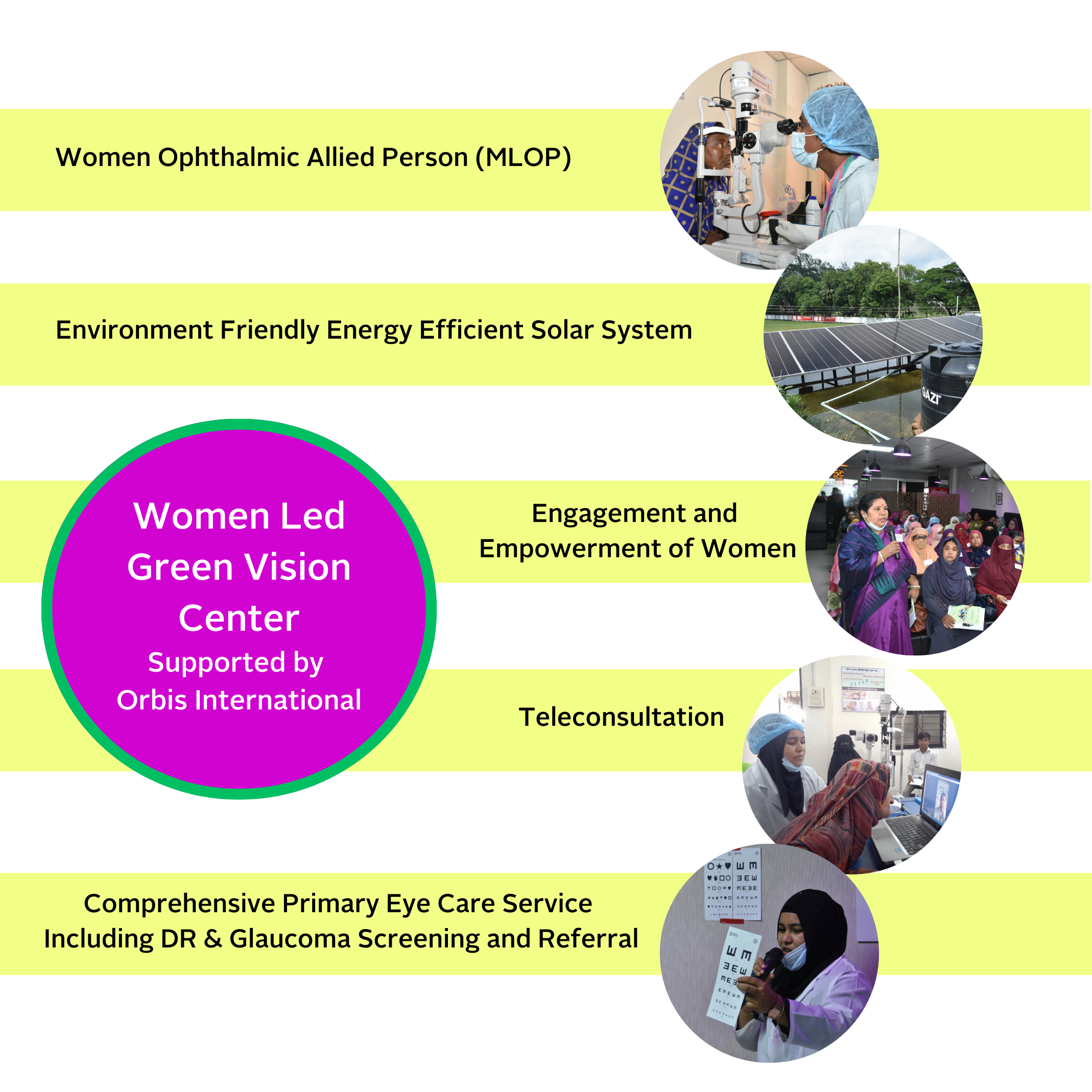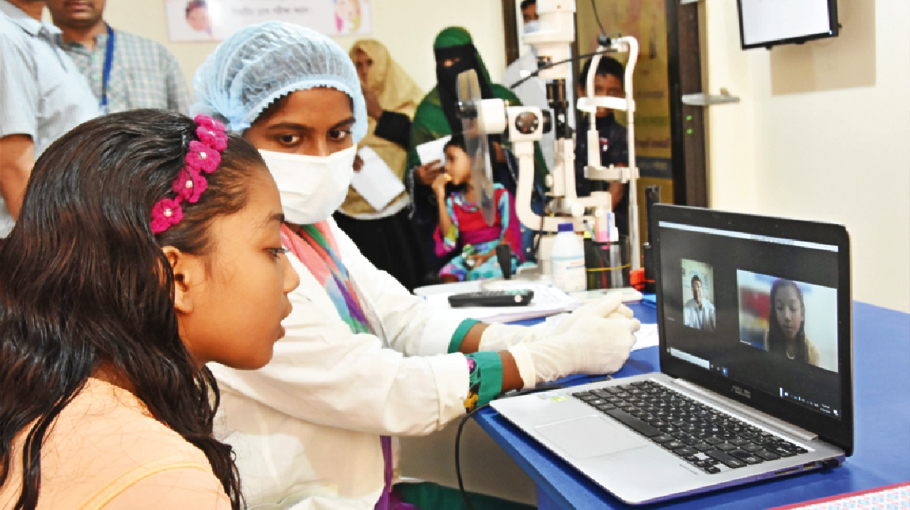Orbis efforts to cut gender blindness gap

Women and girls experience avoidable blindness and vision loss at a higher rate than men and boys throughout the world. According to the findings of global surveys, women and girls make up more than 55 percent of all people with vision loss.
For some women and girls, care is inaccessible due to limited financial resources. Families spend their money on other priorities instead of funding vision care for women and girls. Finding time can also become difficult due to the extra burden of household, childcare, and other responsibilities that some women carry.
In Bangladesh, women and girls have fewer options to travel than men and are concerned about their safety when travelling. It is challenging for them to simply get to their eye care appointments, especially when local transportation is limited, and eye health offices are difficult to reach.
And in addition to the obstacles they face to achieve equitable access to quality eye care, many women and girls encounter gender-specific barriers to attain healthy sight.
With the world celebrating International Women’s Day on Mar 8, the issue of gender blindness gap has come to the fore. Orbis International, a global non-profit non-governmental organization dedicated to saving sight worldwide, is working to close the gender blindness gap – making healthy sight a reality for women and girls worldwide.
With its network of partners, trained eye health providers, and dedicated supporters, Orbis is breaking down the barriers to access that many women face and helping to deliver sight-saving care through Women-Led Green Vision Centers (WLGVCs), an innovative approach to expand eye healthcare.
Of the 36 community-based vision centers that Orbis has established in Bangladesh, four are WLGVCs. The WLGVCs at Shahrasti and Haimchar in Chandpur and Char Alexander in Lakshmipur have been established in partnership with Chandpur-based Majharul Haque BNSB Eye Hospital while the one at Baniachang in Habiganj has been developed in cooperation with Moulvibazar BNSB Eye Hospital. The four WLGVCs served over 300,000 people in 2022.
Orbis, which has identified gender as a major priority in its strategic plan for 2023-2026, has taken a plan to develop a further 100 community-based vision centers in Bangladesh with five more WLGVCs being established in the northern region in partnership with Rangpur-based Deep Eye Care Foundation.
 WLGVCs are staffed with trained women eye health professionals. These eye care centers not only improve the quality of vision care for communities that have traditionally lacked access, but they are designed to operate sustainably. By being led by women, the centers can address some of the gender-specific barriers to access that women and girls face.
WLGVCs are staffed with trained women eye health professionals. These eye care centers not only improve the quality of vision care for communities that have traditionally lacked access, but they are designed to operate sustainably. By being led by women, the centers can address some of the gender-specific barriers to access that women and girls face.
Women and girls are more likely to seek the care they need from a vision centre administered by another woman. And since the centers are community-based, access is available to local women and girls who are unable to travel far distances on their own. Besides, those who lack the funds to cover treatment can receive low-cost, or even no-cost, care.
"It is a women-friendly vision centre with mostly female patients coming here. Women and girls feel very comfortable sharing their problems with me, and I’m able to provide treatment cheerfully,” said Nurun Nahar Aktar, the head of Char Alexander WLGVC. The version of Anwara, a 55-year-old cataract patent who has been treated by Shahrasti vision centre, substantiated the statement of Nurun Nahar Aktar about the women-friendly environment of WLGVCs.
“The doctor who tested my eyes was a woman. So, I didn’t feel shy and was able to express myself to the fullest...”
For several months prior to visiting Shahrasti vision centre, Anwara had been suffering from vision problems. Unable to afford the costs to see a qualified doctor, she was unaware that she had cataracts and sought relief from a medication that ultimately aggravated her condition.
But soon she heard about the eye care services offered at Shahrasti vision centre and made an appointment to have her eyes screened. With the knowledge that the center is led by women eye care professionals, Anwara was able to access the care she needed.
Many vision centers are located in regions with frequent power outages, but each WLGVC runs on solar power. This is not only environmentally-friendly but it helps to ensure that eye care is consistently available to women and girls when they need it.
Talking on the future plan of Orbis, Dr Munir Ahmed, Country Director of Orbis for Bangladesh, said statistics available suggest women lag behind men in receiving eye care services in the country.
“So we’ve come to the conclusion that we need to take some action and after having consultations with our partners and other stakeholders, we’ve taken a long-term plan to bridge the gender-based eye care service gap,” he said.
“First, we’ll create awareness about the necessity of eye care and then we’ll offer skill training to our partners. We’re also motivating our partners to hire more women than men in the vision center for better service delivery to women and girls,” he added.
Globally, only 25-30 percent of ophthalmologists are women and very few provide care in low- and middle-income countries around the world. This makes access to care even more challenging and underscores the need for more female eye care professionals.
Orbis works to ensure women and girls have equitable access to ophthalmic training around the world through in-person training projects on board the Flying Eye Hospital and in local hospitals.


